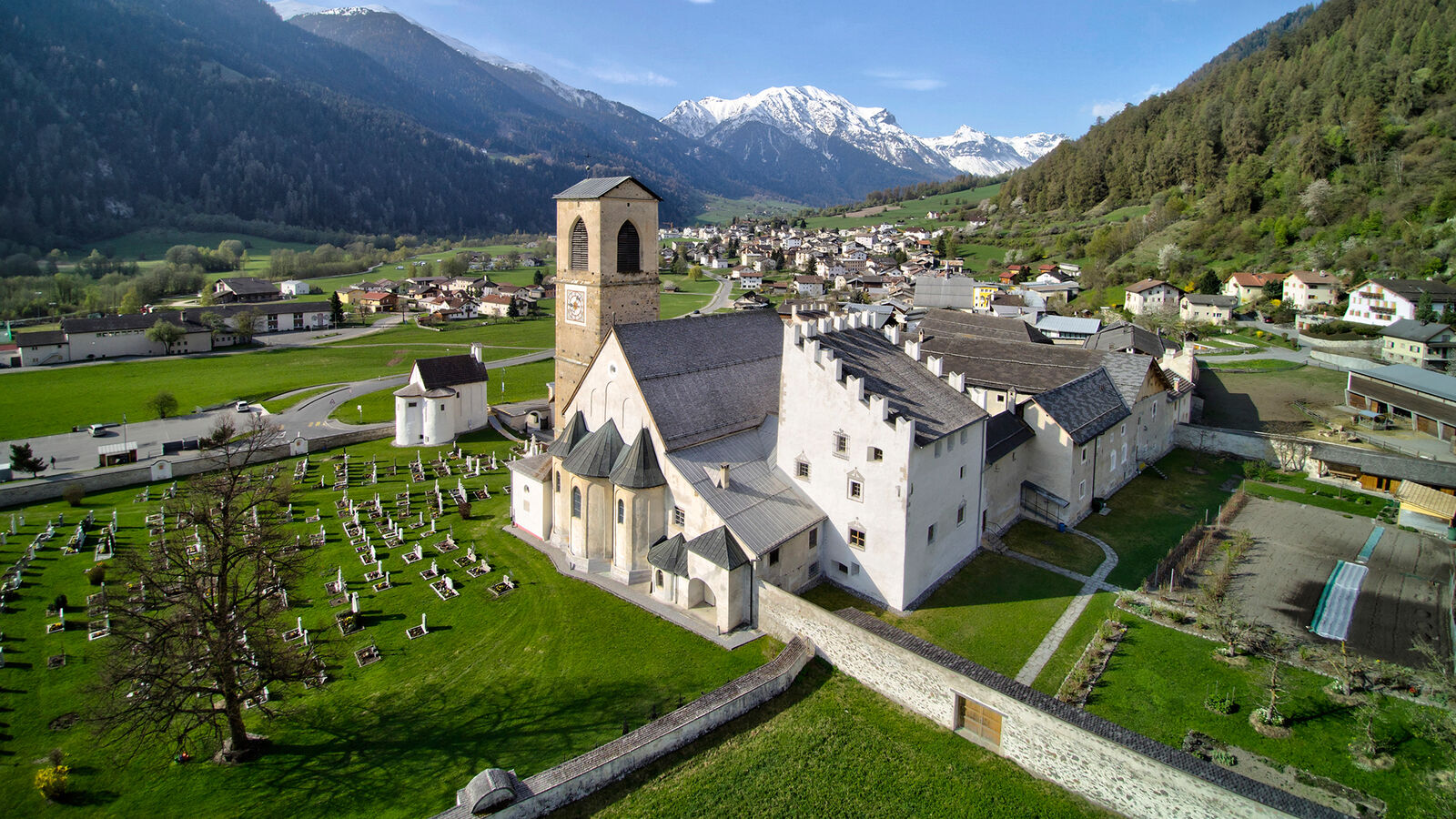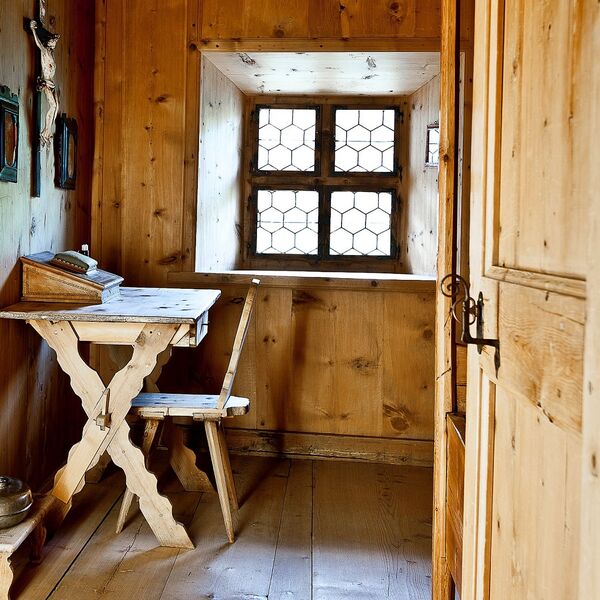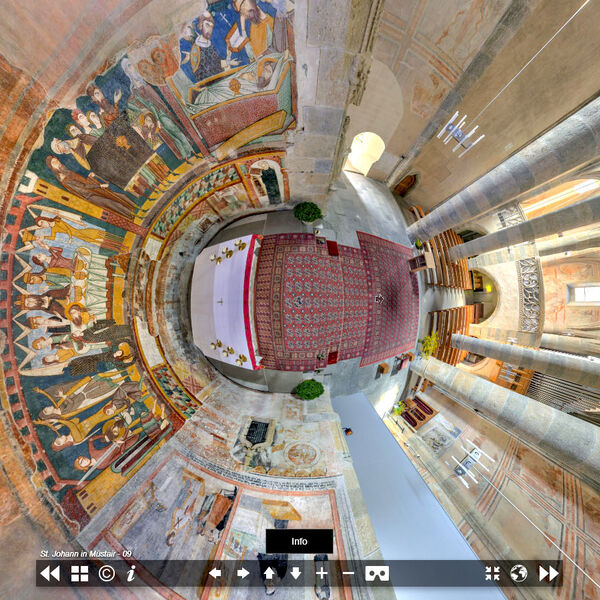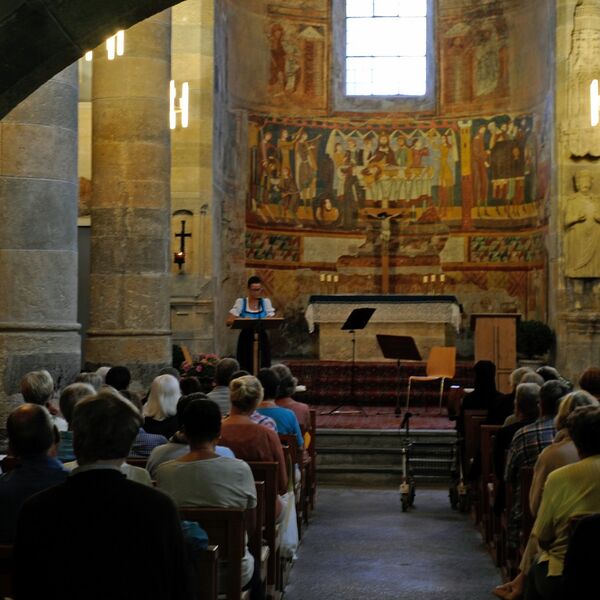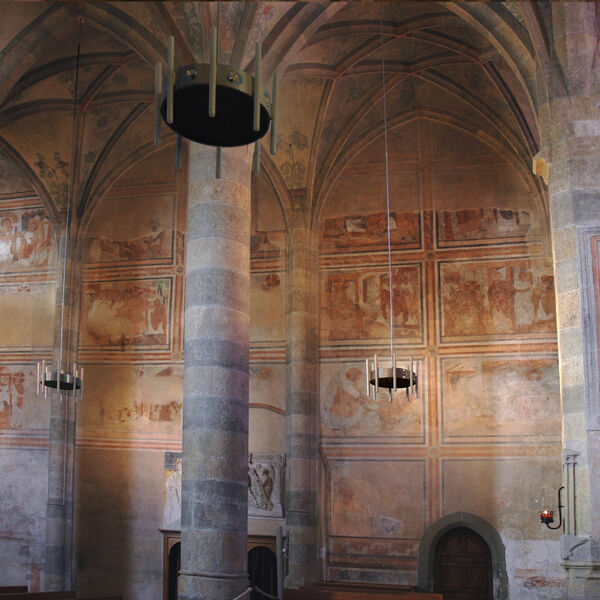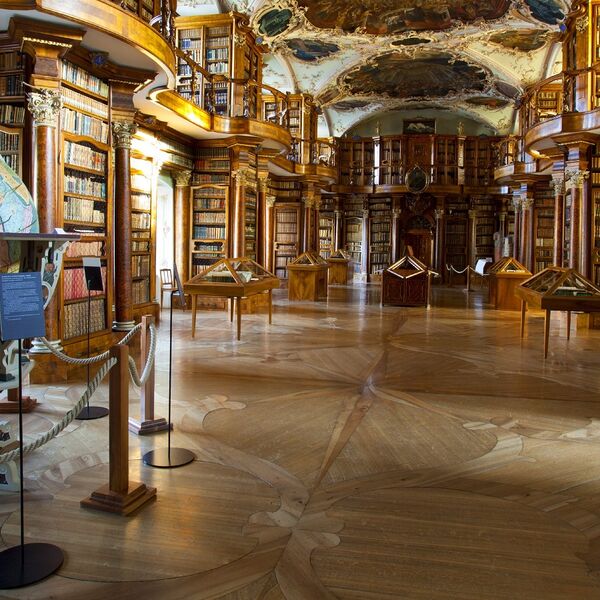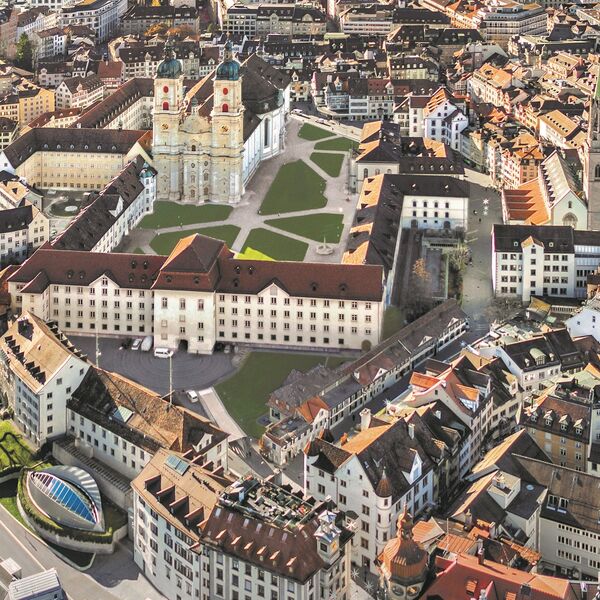Kloster St. Johann in Müstair
1200-jährige Klostergeschichte
Wussten Sie?
- Das Kloster St. Johann in Müstair wird seit 1246 Jahren von Benediktiner/innen bewohnt.
- Bis heute wurden im Kloster St. Johann in Müstair über 9 804 375 Psalmen gebetet.
Geschichte
Die Region, die heute abgelegen hinter dem Ofenpass liegt, bildete nicht immer eine Randzone. Seit dem 1. Jahrhundert führte ganz in der Nähe die Via Claudia Augusta vorbei, die von Brescia über den Reschenpass nach Norden verlief. Dieser Verbindungsweg und die anderen angrenzenden Pässe erhielten unter Karl dem Grossen (ca. 742 – 814) strategische Bedeutung. Der Frankenherrscher hatte 774 die Langobarden bei Pavia besiegt und deren Länder ins Reich integriert. Und 788 sollte er den unbotmässigen bayrischen Herzog Tassilo absetzen. Wie ein Keil stiessen non zwischen diese zwei Gebiete der Vinschgau und das Münstertal hinein, die dem Bischof von Chur unterstellt waren. Die Abtei St. Johann dürfte daher nicht zuletzt zur Sicherung der Übergänge errichtet worden sein.
Der geschilderte geschichtliche Kontext, archäologische Funde und dendrochronologische Daten (die ältesten Hölzer des Klosters wurden 775 gefällt), die regelmässige Anlage sowie die Dimensionen der Bauten (der Umfang der karolingischen Abtei war grösser als das heutige Stift) sprechen für einen gewichtigen Gründer. Die örtliche Überlieferung schreibt die Schaffung des Klosters denn auch Karl dem Grossen zu. Der Frankherrscher zeigte sich einerseits grosszügig gegenüber der Kirche, doch verstand er es anderseits, sie als Werkzeug für seine politischen Ziele zu nutzen. Es ist aber nicht auszuschliessen, dass an Stelle Karls des Grossen der Bischof von Chur in dessen Namen und mit eventueller finanzieller Unterstützung des Herrschers die Abtei erstellte.
Das Stift war von Anfang an als Kloster mit einer Residenz konzipiert worden, um nebst der Gottesverehrung wichtige Persönlichkeiten zu beherbergen. Es diente dem Bischof von Chur zudem als Nebenresidenz für seine süd-östlichen Gebiete. Der karolingische Konvent hatte eine Dreiapsiden-Saalkirche mit Anbauten. Dem Gotteshaus schlossen sich der Kreuz- und der Wirtschaftshof an.
